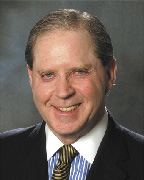Most savvy real estate investors are aware of the benefits that cost segregation studies and like-kind exchanges under IRC Sec. 1031 can produce. Each method allows for the deferral of taxes, whether it is the short term or for the long term. However, when these provisions cross paths, the results can be unexpected and quite detrimental to unsuspecting investors or real estate professionals.
The landmark case of Hospital Corp. of America, 109 TC 21 (1997) provided the foundation of what kinds of components of what was previously considered a single piece of depreciable real property could be segregated into "buckets", one for real property, the other for personal property. The taxpayer would effectively defer taxable income by having greater deductions for depreciation than under the prior method of depreciating the entire building and its components over as much as 39 years.
Under Sec. 1031, it has been well-established that like-kind exchanges of real estate enjoy the broadest of definitions when taking into consideration what is "like-kind" property. For example, unimproved real estate could be exchanged for a commercial shopping complex, with any gain realized being deferred by the mechanism of substituting the adjusted tax basis in the property exchanged for the property received. Any deferred gain would be recognized by the investor when the exchanged property was sold.
But what happens when an investor who has previously characterized some of his property as personal property through a cost segregation study, and who has taken accelerated depreciation on the personal property components, wishes to enter into a like-kind exchange for real property that has not been segregated into its components? The investor would realize and recognize gain at ordinary income rates on the exchange to the extent of depreciation taken on the personal property. This outcome can be made even more dreadful if the taxpayer did not receive any liquid assets with which to pay the tax arising from this unexpected income.
Norman Posner, CPA, managing partner, Samet & Co., Chestnut Hill, Mass.
Tags:
The interplay of cost segregation and IRC Sec. 1031 like-kind exchanges
November 17, 2009 - Front Section









